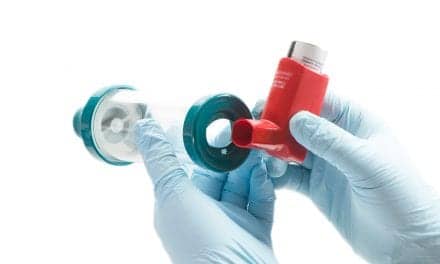The US Food and Drug Administration (FDA) has granted 510(k) clearance for 4DMedical’s computed tomography (CT)-based ventilation product, CT LVAS.
Designed for use with CT scans, CT LVAS joins 4DMedical’s XV LVAS imaging software cleared for use with fluoroscopy In the United States. The FDA clearance for CT LVAS dovetails with the upcoming 4DMedical product, CT:VQ, which will enable blood flow data and visualizations to be extracted from CT scans.
Standard CT images provide clinicians with structural detail about patients’ lungs—from which they try to infer information about disease and function. CT LVAS adds data on lung performance on top of the structural detail of CT scans. This capability fills an information gap that enables radiologists to provide objective, data-driven information that could inform diagnosis and treatment options, according to a release from 4DMedical.
“Having assisted with image interpretation of CT LVAS exams in Australia, I’ve seen the diagnostic power of adding functional assessment to the structural information provided in standard non-contrast chest CTs,” says Greg Mogel, MD, consultant radiologist at 4DMedical, in a release. “CT LVAS allows radiologists to provide a whole new dimension of lung health information to referring clinicians needing answers.”
CT LVAS software processes existing CT scans using algorithms derived from aerospace technology. These detailed reports include color-coded images of regional airflow and lung ventilation—overlayed on the patient’s CT scan. CT LVAS uses a software-as-a-service model and requires no new capital equipment, according to the company. Scans from existing CT equipment are uploaded for processing, where they are analyzed and returned to the radiologist as the Ventilation Report.
CT LVAS measures lung ventilation in tens of thousands of locations in the lungs. The Regional Ventilation Visualizations provide region-specific ventilation at deep inspiratory breath-hold for a mid-coronal slice and three axial slices—upper, middle, and lower. The regional ventilation data is quantified in lung volume change and regional lung ventilation heterogeneity.
In healthy lungs, ventilation and perfusion are well-matched, meaning that airflow and blood flow are equally distributed throughout the lungs. 4DMedical’s CT:VQ technology will enable regional changes in ventilation and perfusion to be quantified and visualized, allowing a detailed assessment of V/Q mismatch.
Clinically, these scans will primarily be used for diagnosing pulmonary embolism, but they can also be employed to assess conditions such as chronic obstructive pulmonary disease, pulmonary hypertension, and to evaluate pulmonary vascular disorders.
Blood flow data and visualizations from CT:VQ can be combined with the ventilation data and visualizations provided by CT LVAS “for a highly quantified picture of lung performance,” according to a release from the company.
Photo caption: CT LVAS
Photo credit: 4DMedical










